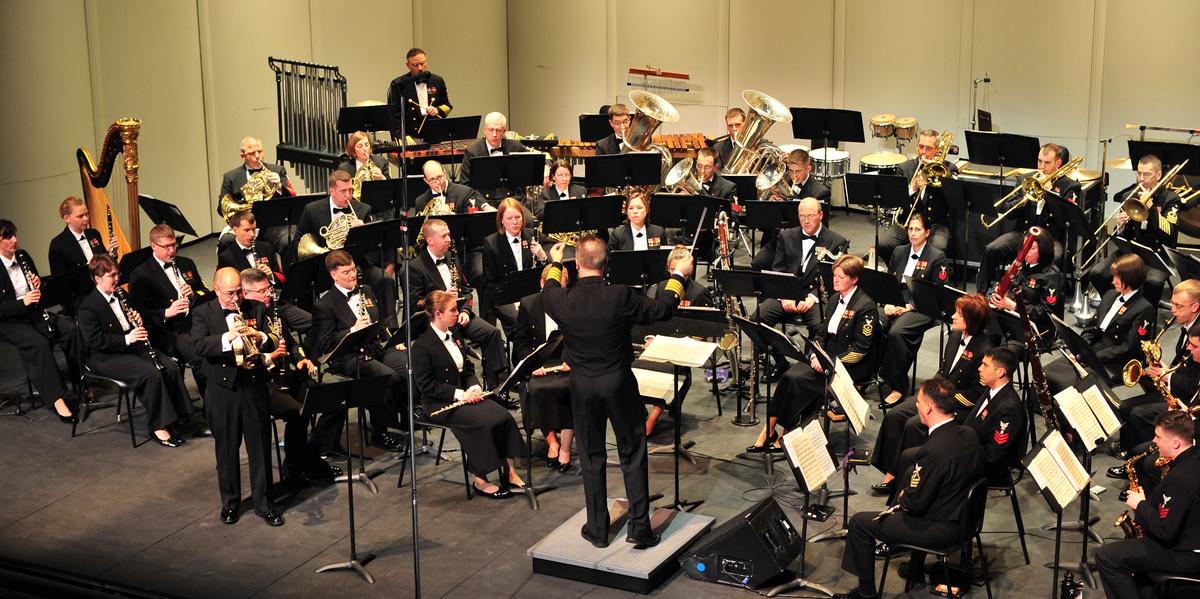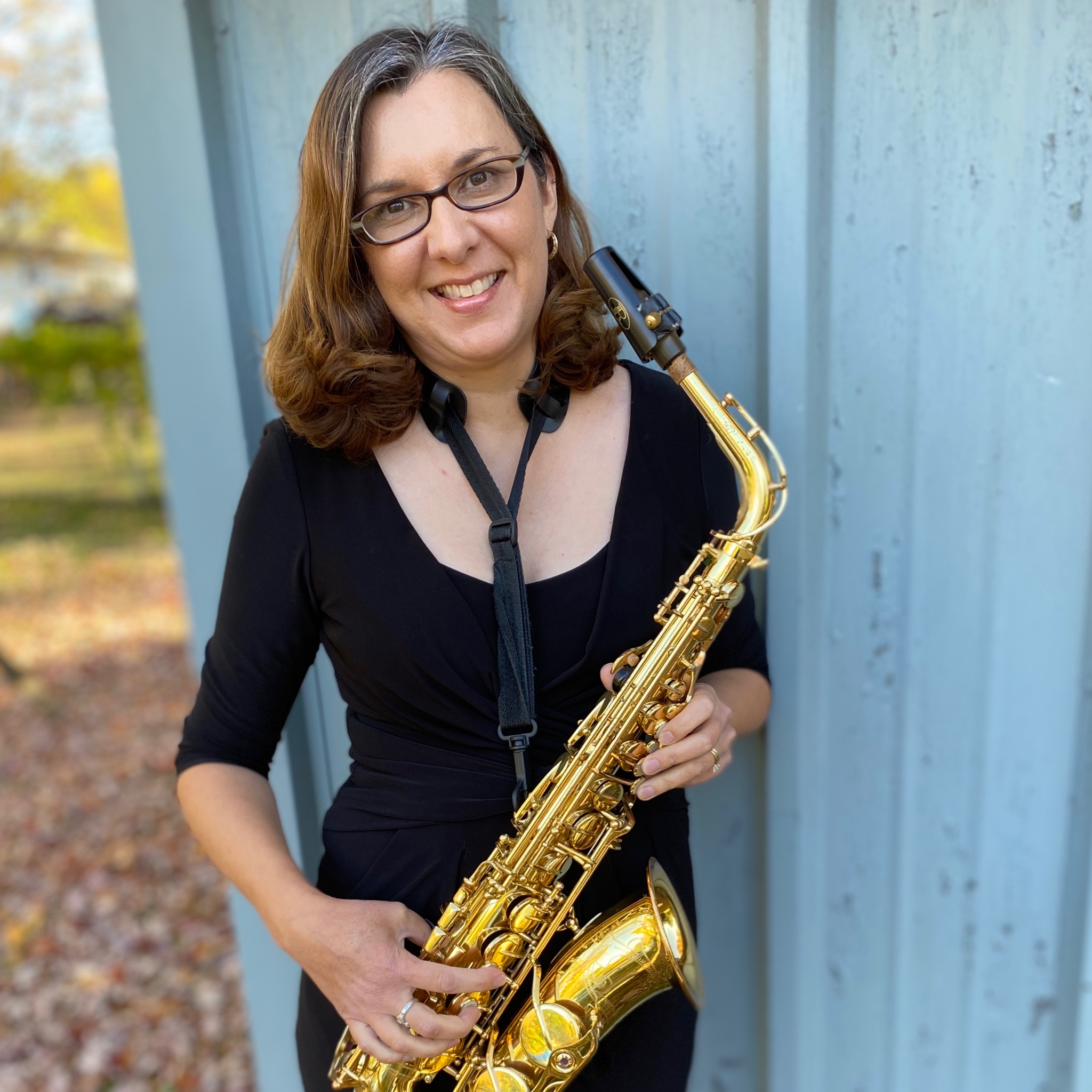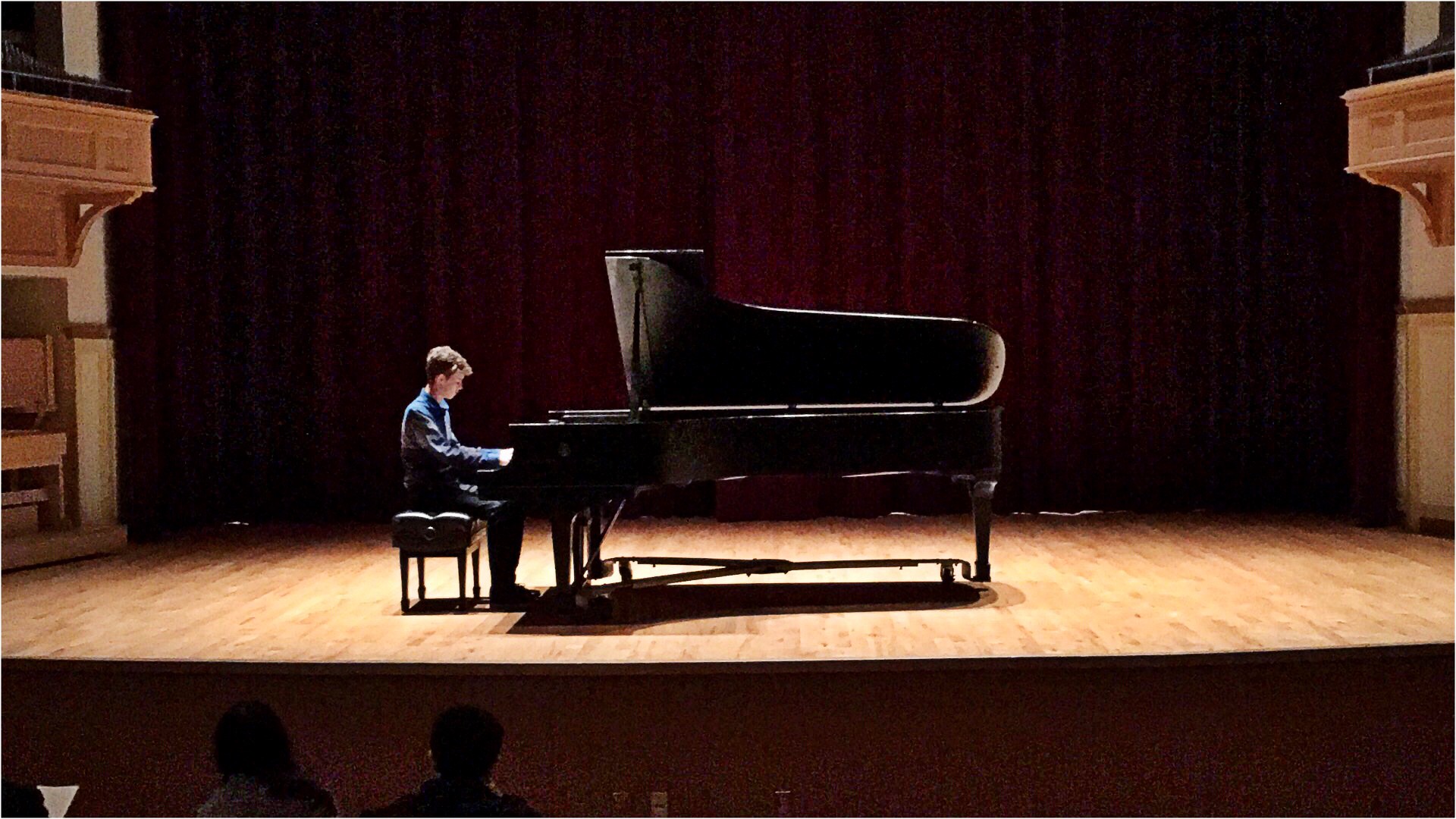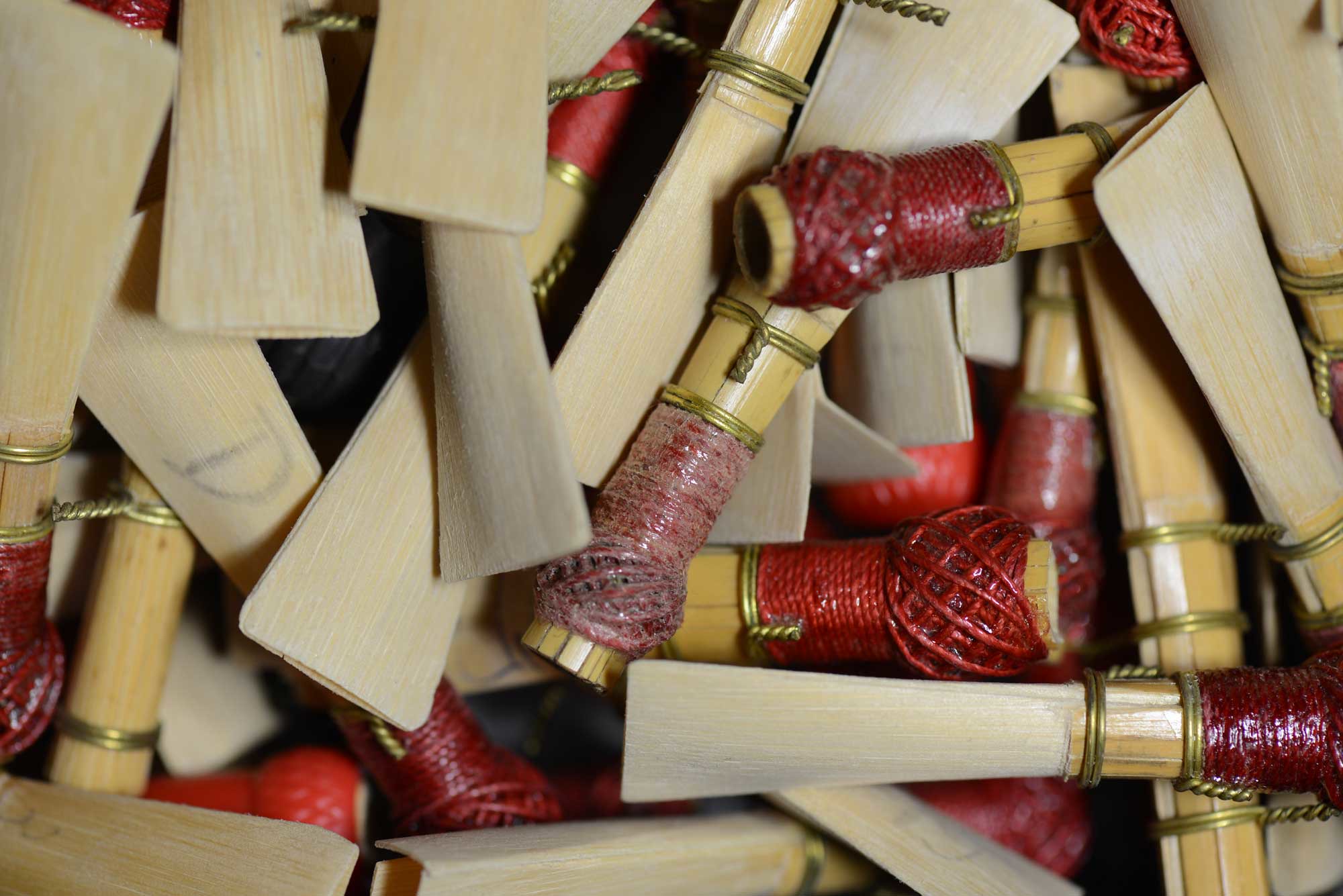What is a Concert Band?
A concert band, sometimes called a symphonic band, is an ensemble comprised of woodwind, brass, and percussion instruments. At times, a concert band may also include piano, harp, or string bass, depending on the needs of certain pieces.
US Army Field Band demonstrates some instruments commonly found in Concert Bands in the following video:
A concert or symphonic band should not be confused with a marching band. While they often include similar instrumentation, a concert band is a seated group.
The number of members of concert or symphonic bands can vary greatly. In public school settings, they are often very large, but in professional settings, they are typically smaller.
Some professional concert bands include those employed by the United States Military, such as the United States Air Force Band, heard in the video below.
Concert bands can also be found in public school or honor band settings. The video below is of the New York State Band Directors Association (NYSBDA) High School Honor Band of 2019.
What is the Difference Between a Concert or Symphonic Band and a Wind Ensemble?
People often see the title “wind ensemble” and assume the group does not contain percussion instruments. This is an incorrect assumption. A wind ensemble contains instruments from the woodwind, brass, and percussion families, just as a concert and symphonic bands do.
The difference between wind ensembles and other wind bands is usually the number of players in each section. Traditionally, concert or symphonic bands are large ensembles, with numerous players on each part. Wind ensembles are smaller ensembles, with only one or two players on each part.
In a public school setting, wind ensembles typically play more challenging music and contain advanced players, while concert bands are larger groups that play less challenging music. Often, school wind ensembles are audition-only groups, where concert or symphonic bands welcome all levels of players.
Brief History of Wind Bands in America
Wind bands can trace their origins all the way back to the Medieval time period. This brief history will focus on a portion of the history of wind bands in America, beginning in the 19th century.
The American wind bands of the early 1800s were largely based on the tradition of European bands. While the instrumentation of the United States Marine Band of 1800 was comprised of two oboes, two clarinets, a bassoon, two horns, and a drum, the most commonly seen wind bands only contained brass instruments.
Brass Bands
A varied mixture of brass instruments made up the instrumentation of 1800s brass bands. They often included keyed bugles, ophicleides, natural French horns, trumpets, post horns, and trombones. American brass bands performed pieces such as polkas, galops, waltzes, patriotic selections, and marches.
When the American Civil War began in 1861, there were numerous brass bands across the country. The bands performed at concerts, political rallies, parades, and dances. Many bands also participated in musters and ceremonies with the local militia, where they were often used to encourage men to enlist for both the Union and Confederate armies.
As the Civil War continued, members of military brass bands found that their duties changed quite dramatically. They were not just expected to perform for the troops but were now required to lead them as they marched into battle, act as stretcher-bearers, assist surgeons, and bury the dead.
In 1865, Union General Philip H. Sheridan was heard to order his musicians to “play the gayest tunes in their books...never mind if a bullet goes through a trombone, or even a trombonist, now and then.”
The video below offers a great demonstration of Civil War era instruments, by Jeff Stockham. Mr. Stockham was one of the historical music consultants for Steven Spielberg’s film, Lincoln.
Patrick Gilmore’s Band
Patrick Gilmore (1829-1892) was one of the soldiers who had to fulfill the duties of both stretcher-bearer and musician during the Civil War. Gilmore, the famous cornetist and bandmaster, was born in Ireland in 1829. In 1849, he escaped the famine and emigrated to Canada. After living in Canada for a short time, Gilmore moved to Boston, where his prolific American music career began.
After surviving the Civil War, Gilmore established Gilmore’s Band, in 1873. His band was able to tour the U.S., Canada, and Europe. This band offered a mixture of wind instruments that were not commonly heard by most Americans. Gilmore’s Band was comprised of the following instrumentation.
piccolo E-flat soprano cornet
flute B-flat cornet
oboe trumpet
A-flat sopranino clarinet flugelhorn
E-flat soprano clarinet French horn
B-flat clarinet E-flat alto horn
alto clarinet tenor horn
bass clarinet euphonium
soprano saxophone trombone
alto saxophone bombardon (tuba)
tenor saxophone percussion
bassoon
contrabassoon
It is important to note that Gilmore was the first American bandleader to utilize the newly-invented saxophone in his ensemble.
Gilmore and his band can be credited with performing at and creating many “firsts” for the United States, including:
- 1855 - First “Promenade Concert in America,” which was the predecessor of today’s Boston Pops concerts.
- Established “Gilmore’s Concert Garden,” which became Madison Square Garden
- 1876 - Lead United States Centennial celebrations in Philadelphia
- 1886 - Lead festivities at the dedication of the Statue of Liberty
- 1891 - Established public New Year’s Eve celebration in New York City
- 1891 - Played on some of Thomas Edison’s first commercial wax cylinder recordings
John Philip Sousa once called Patrick Gilmore, the “Father of the American Band” and also remarked that anyone “who could do one-thousandth as much good for mankind as was done by Patrick Sarsfield Gilmore, his memory will indeed be blessed.”
John Philip Sousa
John Philip Sousa (1854-1932) is perhaps the most well-known bandmaster, and is widely known as “The March King.” Sousa began his musical career began as an apprentice with the United States Marine Band. He also performed in and conducted many theater orchestras. Eventually, Sousa was asked to direct the United States Marine Band. The Marine Band made its first recordings on wax cylinders, for the Columbia Phonograph Company, under the direction of Sousa.
Sousa was a prolific composer, not only of marches, but also art songs and operettas. While the latter two categories are not very well-known, some of his most popular marches include Semper Fidelis (1888), The Washington Post (1889), The Liberty Bell (1893), and The Stars and Stripes Forever! (1896).
In 1892, Sousa resigned from the United States Marine Band and formed his own band, The Sousa Band. The instrumentation of this band was similar to what we are used to today in most concert bands.
Active until 1931, Sousa and his band toured the U.S., Europe, completed one world tour, and even performed for King Edward VII of England.
United States Military Bands
The earliest documented military band in the United States was a 1653 New Hampshire militia band.
All of the branches of the U.S. military (Marine Corps, Navy, Army, Coast Guard, and Air Force) employ a variety of bands, including concert bands and jazz bands. The bands are comprised of regularly enlisted or commissioned military personnel.
Duties of the bands include performing at military funerals, official state arrivals, commissioning of ships, promotion ceremonies, and parades. They also tour, giving free concerts throughout the United States.
Two of the most well-known United States Military Bands are “The President’s Own” and “Pershing’s Own.”
“The President’s Own” - The United States Marine Corps Band
The oldest established U.S. military band is “The President’s Own,” United States Marine Corps Band which was founded in 1798, under President John Adams. This is the only musical group with the primary mission of providing music for the President of the United States. They have performed at every inauguration since Thomas Jefferson’s in 1801. It is said that Jefferson first dubbed the band, “The President’s Own.”
In addition to inaugurations, they have also performed at numerous inaugural balls, White House weddings, State dinners, concerts, and tours. Under the famed direction of John Philip Sousa, “The President’s Own” began touring in 1891 and has continued to the present day.
Several presidents have been known to play with “The President’s Own,” from time to time. President Warren G. Harding sat in with the ensemble and claimed to have played every instrument except trombone and E-flat cornet. In 2008, President George W. Bush conducted the ensemble in a performance of The Stars and Stripes Forever, at the White House Correspondent’s Dinner.
“Pershing’s Own” - The United States Army Band
Another of the more well-known military bands is The United States Army Band, known as “Pershing’s Own.” This group was formed in 1922, at the request of General John Pershing, who felt that military bands were important to boost morale and increase efficiency among the troops. He also wanted a band that would outshine the military bands of Europe. Throughout the years, “Pershing’s Own” has performed at the first Presidential wreath-laying ceremony at the Tomb of the Unknown Soldier at Arlington Cemetery, the ceremony for Charles Lindbergh and “The Spirit of St. Louis,” President John F. Kennedy’s funeral, and various Olympic Games.
Concert Band in American Public Schools
The earliest documented instrumental program in an American school was in 1857, at Boston’s Farm and Trade School. However, Will Earhart’s orchestra, in Indiana, is credited as being the first successful instrumental program in United States schools, in 1898.
In the early 1900s, school districts began hiring full-time music teachers and provided instruments, uniforms, and rehearsal space. School music ensembles were given time to rehearse during the school day and were established as credit-bearing classes. Up until this time, most music classes were taught after school, by private teachers.
By the end of the 1920s, most high schools, and many elementary schools had band programs. Towns and villages began relying on school bands to provide music for parades, sporting events, and various community events.
School band leaders recognized that some, but not all, students were going to become professional musicians. Teachers worked to educate students in music theory, as well as music appreciation, in order to produce well-educated music consumers. Many student musicians went on to perform with local community bands, as well.
Band offerings at U.S. public schools continue to evolve. Most districts now have band programs beginning in fourth or fifth grade, continuing through high school. At the high school level, students in some districts will even have the choice of playing in a traditional concert band setting or in an audition-only wind ensemble. Many high schools offer jazz band and marching band, as well.
Community Bands
Community bands, sometimes called “town,” “civic,” or “municipal” bands, are comprised of volunteer amateur musicians. They hold regularly scheduled rehearsals for community events, such as Old Home Days, and special holiday performances such as the Fourth of July and Memorial Day.
It is estimated that at the end of the 1800s, there were thousands of active community bands in the United States. Many of these bands emerged from the military bands of the Civil War.
After World War I, interest in community bands began to die out, a victim of a cultural shift brought on by numerous advances in technology. This is also the time that the United States started to see a rise in school music programs. More students were learning band instruments and needed an outlet for their musical knowledge after graduating from high school. Due to this, we begin to see a rise in participation in community bands in the United States.
In fact, community bands became so valued that in 1921, the Iowa legislature passed a law entitled “The Municipal Band Fund.” This law, sponsored by famed bandleader and composer, Karl King, authorized a tax for cities, with fewer than 40,000 residents, to maintain a municipal band. Community bands were now regular city departments reliant on the city’s annual budget, rather than being dependent on funds from charitable contributions. The law was copied by 33 states and at least three countries. After the legislation passed, Karl King was inspired to compose Iowa Band Law March.
Pyramid of Sound
All of the aforementioned groups would have striven to use the pyramid of sound, but they probably didn’t call it that! Well-known American composer and conductor, W. Francis McBeth introduced his “Double Pyramid Balance System” in the mid-1900s. A well-balanced and blended wind band sound is achieved through this pyramid of sound.
As illustrated by the graphic below, the pyramid of sound means that there needs to be more volume from bass instruments, and less volume from soprano instruments. Basically, the lower instruments provide the foundation of an ensemble, while the sound from higher instruments floats on top of that solid foundation.
The pyramid of sound also helps promote active listening within an ensemble. This, in turn, will improve dynamic control, intonation, and blend within a concert band.
The video below offers a great explanation of the pyramid of sound. Be sure to watch all the way through to the end to see how the pyramid of sound is like a chocolate cake!
Concert Band Seating
The seating for a wind band can vary based on instrumentation within the ensemble, conductor preference, and rehearsal and performance space. In schools, seating is dependant upon many factors, including room size, whether or not the whole ensemble rehearses together or in separate sections, the number of instruments in each section, and individual student needs.
The seating chart below shows an example of the typical large concert band in a public school. You will notice that it does not have perfect instrumentation, but is representative of many school bands.
Some conductors prefer that principal or first chair players are predominately on the outside of the ensemble, at the ends of rows. Others prefer that principal or first chair players are all placed in the center of the rows so that they are all in the middle of the band.
The following seating chart is representative of a typical wind ensemble.
Well-known Concert Band Composers
Throughout the years, numerous composers have made a large impact on wind band repertoire. The roster below is not a complete listing but is instead a jumping-off point if you are interested in further researching wind band literature.
The list below represents a few composers of 20th-century concert band music. There are many other composers, who composed for wind band prior to 1900.
Early 20th Century Wind Band Composers
Percy Grainger (1882-1961)
Gustav Holst (1874-1934) - The first significant piece written for wind bands in the 20th century is considered to be First Suite for Band in E-flat, composed by Holst.
Ralph Vaughan Williams (1872-1958)
Holst First Suite
Mid 20th Century Wind Band Composers
John Barnes Chance (1932-1972)
Norman Dello Joio (1913-2008)
Frank Erickson (1923-1996)
Karel Husa (1921-2016)
Francis McBeth (1933-2012)
Vincent Persichetti (1915-1987)
Clifton Williams (1923-1976)
Air For Band By Frank Erickson:
Late 20th Century Wind Band Composers
Brian Balmages (b.1975)
Mark Camphouse (b.1954)
Michael Colgrass (1932-2019)
David Gillingham (b. 1947)
Julie Giroux (b.1961)
David Maslanka (1943-2017)
Joseph Schwantner (b. 1943)
Frank Ticheli (b.1958)
UNT Concert Band: Julie Giroux - Shine (2017):
In Conclusion
Regardless of whether ensembles are known as concert bands, symphonic bands, or wind ensembles, they all descend from a rich history of American wind bands. Composers continue to explore and stretch the boundaries of concert band capabilities, by writing inventive compositions to add to the repertoire. In the years to come, school music programs will continue to enable the next generation of wind band players to thrive!




